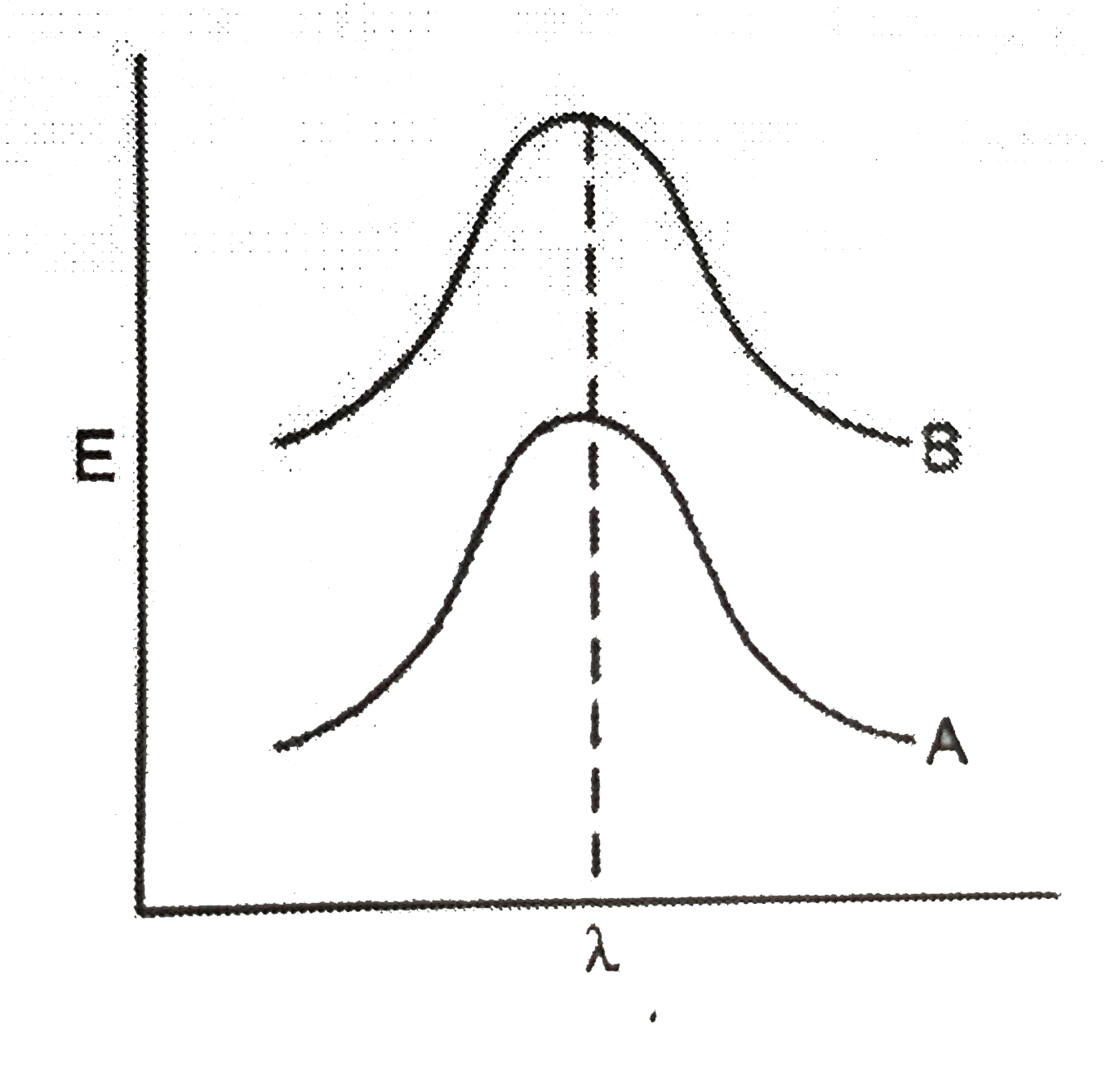Two identical objects A and B (emissivity eA and eB,eA≠eB) are planced in an enclosure, Temperature of body A, B and enclosure are same and constant.
Heat emitted by body A is not equal to heat emitted by body B
Heat absorbed by body A is not equal to heat absorbed by body B
If eA>eB, body A absorbs more heat than body B
If eA<eB, body A emits less heat than body B
The correct Answer is:A, B, C, D
Topper's Solved these Questions
Similar Questions
Three bodies A,B and C have equal surface area and thermal emissivities in the ratio eA:eB:eC=1:12:14. All the three bodies are radiating at same rate. Their wavelengths corresponding to maximum intensity are αA,αB and αC respectively and their temperatures are TA,TB and TC on kelvin scale , then select the incorrect statement
View SolutionTwo electric lamps A and B radiate the same power. Their filaments have the same diemensions, and have emissivities. eA and eB. Their surface tempratures are TA an TB. The ratio TA/TB will be equal to
View Solution
Knowledge Check
Two identical objects A and B (emissivity eA and eB,eA≠eB) are placed in an enclosure. Temperatuure of body A,B and enclosure are same and constant:
AHeat emitted by body A is not equal to heat emitted by body BBHeat absorbed by body A is not equal to heat absorbed by body BCIf eA>eB, body A absorbs more heat than body BDIf eA<eB, body A emits less heat than body BThree bodies A,B and C have equal surface area and thermal emissivities in the ratio eA:eB:eC=1:12:14. All the three bodies are radiating at same rate. Their wavelengths corresponding to maximum intensity are αA,αB and αC respectively and their temperatures are TA,TB and TC on kelvin scale , then select the incorrect statement
A√TATC=TBB√λAλC=λBC√eATA√eCTC=eBTBD√eAλATA.eBλBTB=eCλCTCTwo reactions A→ products and B→ products have rate constants ka and kb respectively at temperature T and activation energies are Ea and Eb respectively.
If ka>kb and Ea<Eb and assuming the freuency factor A in both the reactions are same thenAon increasing temperature k will be greater than kbBAt lower temperature ka and k will differ moreCAs temperature rises ka and kb will be close to each other in magnitudeDAll of the above are correct
Two rigid bodies A and B rotate with rotational kinetic energies EA and EB respectively. The moments of inertia of A and B about the axis of rotation are IA and IB respectively. If IA=IB/4 and E_(A)= 100 E_(B), the ratio of angular momentum (L_(A)) of A to the angular momentum (L_(B)) of B is
View SolutionTwo spherical black bodies A and B,having radii rA and rB=2rA emit radiation with peak intensities at wavelength 400 nm and 800 nm respectively. If their temperature are TA and TB respectively in Kelvin scale, their emissive powers are EA and EB then :
View Solution Two bodies A and B have the same surface area and mass the bodies have absolute temperaturesTA and TB emissivities ea and eb and specific heat capacities sA and sB. The intensity, E , of radiation near a given wavelength is shown plotted against the wavelength λ, of radiation for both the bodies. Which of the following is possible?
Two bodies A and B have the same surface area and mass the bodies have absolute temperaturesTA and TB emissivities ea and eb and specific heat capacities sA and sB. The intensity, E , of radiation near a given wavelength is shown plotted against the wavelength λ, of radiation for both the bodies. Which of the following is possible?
View SolutionTwo electric lamps A and B radiate the same power. Their filaments have the same diemensions, and have emissivities. eA and eB. Their surface tempratures are TA an TB. The ratio TA/TB will be equal to
View SolutionTwo electrons in two hydrogen - like atoms A and B have their total energies EA and EB in the ratio EA:EB=1:2. Their potential energies UA and UB are in the ratio UA:UB=1:2. If λA and λB are their de-Broglie wavelengths, then λA:λB is
View Solution
